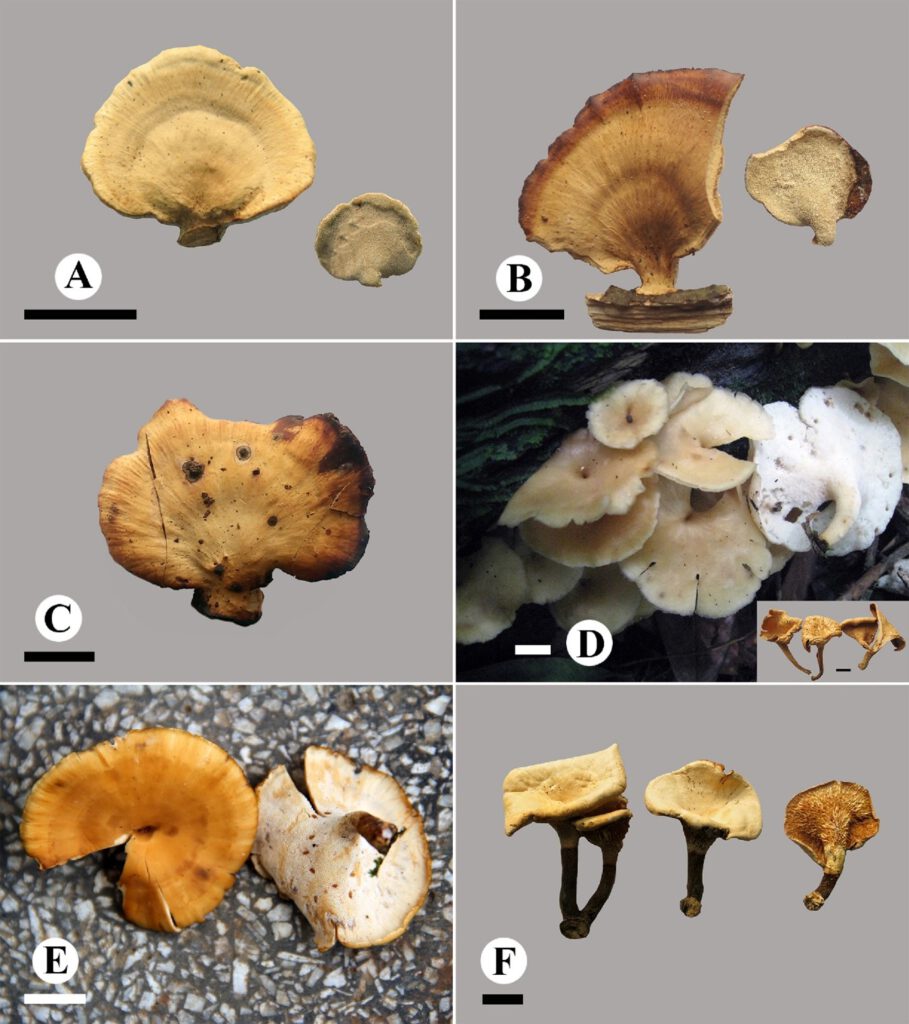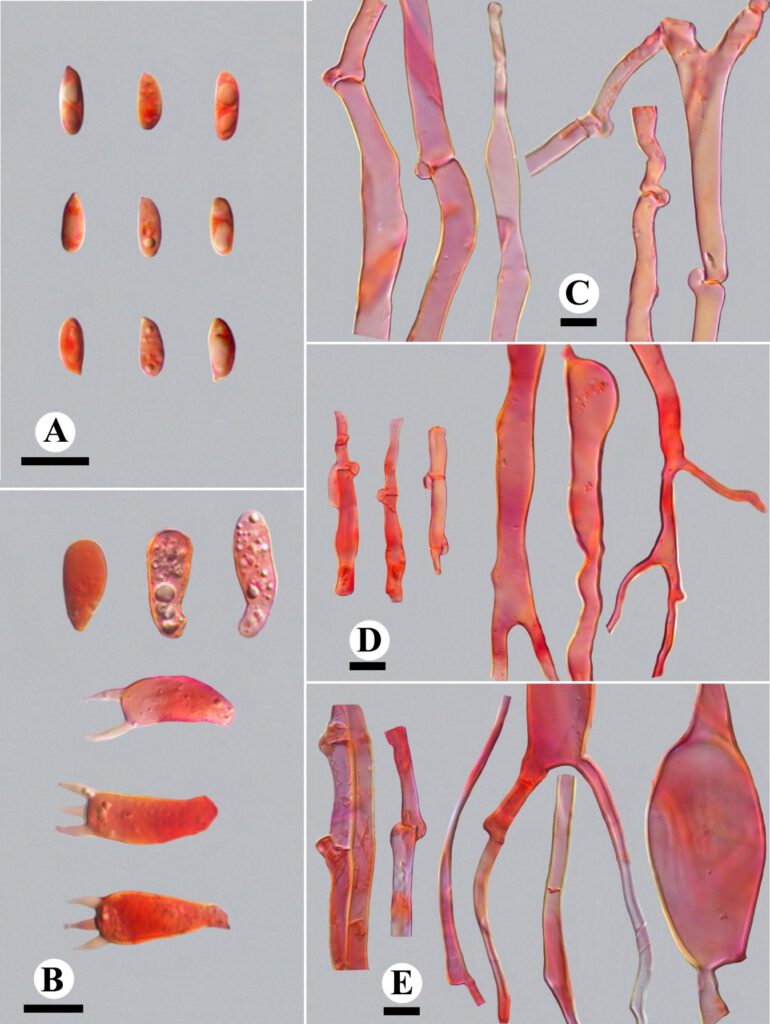Polyporus auratus B.K. Cui, Xing Ji & J.L. Zhou, sp. nov.
MycoBank number: MB 559402; Index Fungorum number: IF 559402; Facesoffungi number: FoF 10650;
Description
Basidiomata – Annual, centrally stipitate, gregarious, fleshy when fresh, becoming fragile and light in weight upon drying. Pilei flat with a depressed centre when fresh, occasionally becoming infundibuliform upon drying, 1.7–6 cm in diam, up to 4 mm thick. Pileal surface cream to buff when fresh, becoming golden yellow when dry, glabrous, azonate, shining when dry; margin straight when fresh, in-curved upon drying. Pore surface white when fresh, becoming cinnamon when dry; pores angular, 3–4 per mm; dissepiments thin, entire to laccerate. Context white to cream when fresh, becoming buff when dry, up to 3.5 mm thick. Tubes concolorous with pore surface, fragile, decurrent, up to 1 mm thick. Stipe cylindrical, cream when fresh, buff to beige upon drying, up to 4 cm long and 6.5 mm in diam.
Hyphal structure – Hyphal system dimitic in trama and stipe, monomitic in context; generative hyphae bearing clamp connections; skeleto-binding hyphae IKI–, CB+; tissues unchanged in KOH.
Context – Generative hyphae colorless, slightly thick-walled, occasionally branched, with tapering ends, 3.8–12.1 μm in diam, occasionally inflated up to 19 μm in diam.
Tubes – Generative hyphae dominant, colorless, slightly thick-walled, occasionally branched, 1.5–6.8 μm in diam; skeleto-binding hyphae frequent, colorless, thick-walled with a wide lumen, occasionally branched, interwoven, 2–12.1 μm in diam, occasionally inflated up to 18 μm in diam. Cystidia and cystidioles absent. Basidia infrequent, clavate, with a basal clamp connection and four sterigmata, 15.3–26.7 × 6–9.1 μm; basidioles in shape similar to basidia, but slightly smaller.
Stipe – Generative hyphae frequent, colorless, slightly thick-walled, occasionally branched, 3.5–7.8 μm in diam; skeleto-binding hyphae dominant, colorless, thick-walled with a wide to narrow lumen, occasionally branched, interwoven, 2.5–24.5 μm in diam, occasionally inflated up to 34.5 μm in diam.
Basidiospores – Basidiospores cylindrical, rarely oblong, colorless, thin-walled, smooth, frequently bearing two guttules, IKI–, CB–, (6.9–)7.7–10 × 3–3.9 μm, L = 8.66 ± 0.67 μm, W = 3.45 ± 0.24 μm, Q = 2.1–2.93, Qm = 2.52 ± 0.2 (n=57/1).
Material examined: CHINA, China, on rotten angiosperm wood, 16 June 2014, Y.C. Dai, Dai 13665 (BJFC, holotype).
Distribution: Tropical regions of China.
Sequence data: Dai 13665: ITS: KX900056.1 (ITS4/ITS5); LSU: KX900172.1 (LROR/LR7); nSSU: KX900282.1 (PNS1/NS41); mtSSU: KX900239.1 (MS1/MS2); EF1a: KX900359.1 (983/1567R); RPB2: KX900313.1 (fRPB2-5F/bRPB2-7.1R)
Fig. 2–D Basidiomata of Polyporus auratus (Dai 13665). Scale bars: 1 cm. Fig. 10 Microscopic structures of Polyporus auratus. (A): Basidiospores; (B): Basidia and basidioles; (C): Hyphae from context; (D): Hyphae from trama; (E): Hyphae from stipe. Scale bars: A-E = 10 μm.

Fig. 2

Fig. 10
